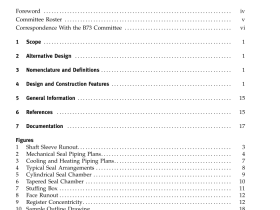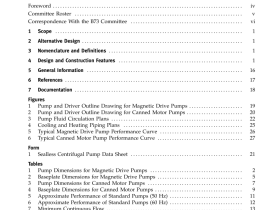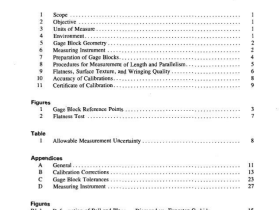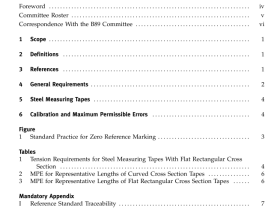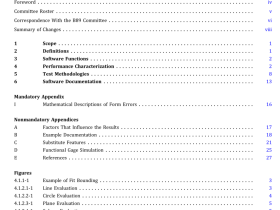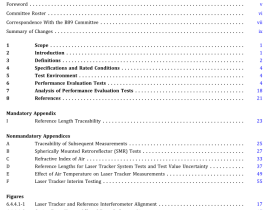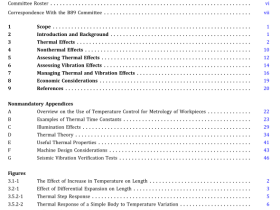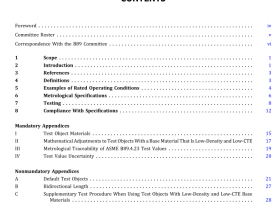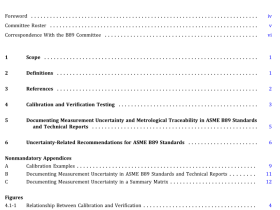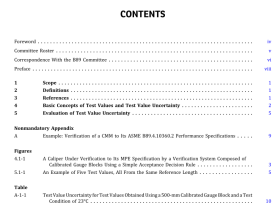ASME B89.1.5 pdf download
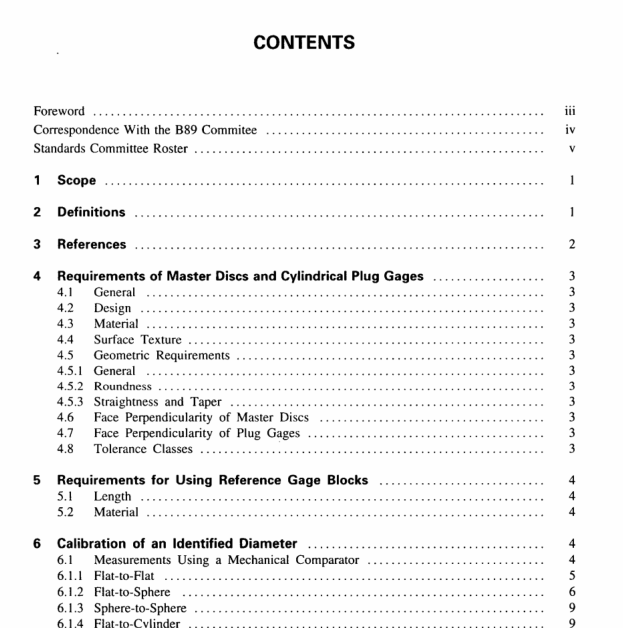
ASME B89.1.5 pdf download MEASUREMENT OF PLAIN . EXTERNAL DIAMETERS FOR USE ASMASTER DISCS OR CYLINDRICAL PLUG GAGES
REQUIREMENTS OF MASTER DISCS ANDdCYLINDRICAL PLUG GAGES
4.1 General
The capability of measuring equipment and techniques to achieve a high order of precision in thecalibration of master discs or cylindrical plug gages islimited by relevant features and conditions of the gageto be measured. These are discussed in paras.4.2through 4.8.
42 Design
The design and proportion specifications for gageblanks are given in ASME/ANSI B47.1.
4.3 Material
The material, including coatings or wear inserts, ofmaster discs or cylindrical plug gage blanks shall befree from inclusions or other imperfections that wouldaffect surface texture. The material shall respond toapplicable hardening and stabilizing processes to permitfinishing to the essential surface texture and to assuredimensional stability. Finished surfaces shall have aminimum hardness equivalent to 60 on the RockwellC Scale.Master gages shall not be subjected to anyquick aging or shock treatment as a check of stability
4.4 Surface Texture
The surface texture shall be consistent with the classtolerance of the gage. Table i lists maximum roughnessvalues expressed in arithmetic average (R) roughnessvalues. ASME B46.1 shall be consulted for referenceinformation.
4.5 Geometric Requirements
4.5.1 General. The diameter will be measured perpara. 6 of this Standard, Typical acceptance criteriafor geometric requirements are diameter measurementsspaced approximately 90 deg apart in eachof threeplanes: the midsection, and each end, located 1.6 mm( in.) from inside the ends of corner radii or chamfersTwo-point diameter measurements will not detect theeffect that odd-numbered or irregular lobing has onsize. Diameter measurements taken at multiple locationsmay not fully detect ovality, even-numbered lobing. orstraightness deviation.
If the gage is measured with nonstandard techniquessuch as multiple-point methods or unusually wide plancanvils, the values in Table 3 may not be appropriate.
The purchaser and the manufacturer should consult onacceptable limits in these cases.
The practical application of Table 3 would be tocompare the measured size of a gage to the prescribedsize plus (for GO) or minus (for NOGO) the tabulatedtolerance (for bilateral gages, plus and minus one-halfthe tabulated tolerance). The measured size should fallwithin the size range thus specified. The practicalapplication of Table 2 would be to compare all themeasurements taken on a gage and find the differencebetween the largest and smallest measurements. Thedifference should not exceed the tabulated value.
NOTE: ASME Y14.5M RULE #I (para. 2.7.1) DOES NOT APPLYDUE TO THE LIMITATIONS OF PRECISION MEASURINGEQUIPMENT AND THE INABILITY TO CORRELATE COMPOSITE FORM DEVLATIONS WITH ABSOLUTE SIZE.(Perfect format mmaximumm material condition is not required.)
4.5.2 Roundness. Deviations in roundness can bedetermined at three planes (see para. 4.5.1) perpendicularto the axis of the gage, using a chart type precisionspindle instrument. The out-of-round condition shallnot exceed the value shown in Table 2. ANSI B89.3.1shall be consulted for measurement information. Pluggages used other than as diameter masters, such aslimit gages, shall be evaluated by criteria applicableto the intended use.
4.5.3 Straightness and Taper. Deviations fromsurface element straightness can be determined bymaking axial tracings approximately 90 deg apart usinga profile type instrument. The determined value shallnot cxceed the tolerances listed in Table 2. Taper ismeasured as the gradual increase or decrease in diameterover the full length of the gage.
4.6 Face Perpendicularity of Master DiscsThe faces of master discs are not required to beground square to the gaging surface. However, propermeasurement techniques must be followed (see para. 6)
